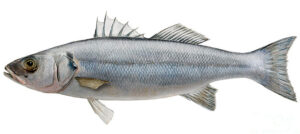ISPANIA-MYLONAS
Title: Use of polymer-based, controlled-release delivery systems for gonadotropin-releasing hormone agonists (GnRHa) for the optimization of spawning induction methods for cultured fishes, with emphasis on the European sea bass (Dicentrarchus labrax).
Funding Source: Binational Greece-Spain
Budget IMBBC: 12,300€
Start / End Date: 2000 - 2003
Project Progress: 100%
Research Directions:
Reproduction and physiology
Description:
 In the Mediterranean region, aquaculture has grown steadily over the past decade and today Greece has the highest marine finfish production, while Spain is by far the first in mussel production. Of the more than 90 hatcheries in operation in the Mediterranean as of 1997, 25 were located in Greece, producing an estimated 100 million of fry. The main species in production are the European seabass (Dicentrarchus labrax) and gilthead seabream (Sparus aurata).
In the Mediterranean region, aquaculture has grown steadily over the past decade and today Greece has the highest marine finfish production, while Spain is by far the first in mussel production. Of the more than 90 hatcheries in operation in the Mediterranean as of 1997, 25 were located in Greece, producing an estimated 100 million of fry. The main species in production are the European seabass (Dicentrarchus labrax) and gilthead seabream (Sparus aurata).
The European seabass is a gonochoristic species with group-synchronous ovarian development, which means that it has the potential for spawning more than once during the annual spawning season. However, spawning of this species in commercial hatcheries is inconsistent and unreliable, compared to the gilthead seabream, creating production problems to the hatchery management. First of all, the time of the onset of the spawning season can vary significantly over the years. Secondly, the percentage of broodstock actually spawning can vary. Finally, the number of spawns produced from each female and the total fecundity are currently unknown, as are many of the factors influencing egg quality. To enhance the effectiveness and efficiency of hatchery production of the European seabass, it is necessary to develop methods for controlling final oocyte maturation (FOM) and inducing multiple spawnings in a predictable and reliable way.
The objective of the current research was to develop a hormonally-based method for the control of final oocyte maturation (FOM), ovulation and spawning in cultured European seabass. This method will enhance the production efficiency of population spawning, as is the situation in commercial hatcheries, and it will enable for the first time the tank spawning of single females in small tanks, as is required for the development of a genetic selection program. The research, which was be carried out both in the IMBC, Greece and IATS, Spain involved (a) development of two different types of sustained-release GnRHa-delivery systems, (b) determination of the most effective hormonal treatment for the induction of multiple spawnings in group- and paired-breedings in small tanks, and (c) evaluation of the effects of the hormonal treatment on spawning frequency, fecundity, fertility, hatching, and larval development and survival. At the end of the study, we have optimized a hormonally-based protocol for the reliable induction of FOM, ovulation and multiple spawnings of European seabass, either in group- or paired breedings, producing eggs of good quality and viability. The development of such method has enhanced the hatchery production of European seabass, but also enabled the establishment of genetic selection programs, which will be based on the tank spawning of individual broodstock.



